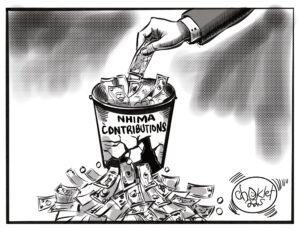Central Statistical Office (CSO) director of Census and Statistics John Kalumbi says the annual inflation rate for December 2017 has reduced from 6.3 per cent recorded in November to 6.1 per cent, while the year average rate stands at 6.6 per cent.
And Kalumbi says the country’s economy has grown by 3.3 per cent in the third quarter of 2017.
Speaking during the CSO monthly bulletin in Lusaka yesterday, Kalumbi disclosed that the annual inflation rate had shown a decreasing patten from 7.5 per cent recorded in December 2016 to 6.1 per cent recorded this year during the same period.
“The year on year inflation rate as measured by the all items Consumer Price Index (CPI) for December 2017 reduced to 6.1 per cent compared to 6.3 per cent recorded in November 2017. This means that on average, prices increased by 6.1 per cent in December 2016 and December 2017. Movement of consumer prices indices show a steadily increasing trend in the prices of commodities during the period of December 2016 to December 2017. However, annual inflation rates over the same period have shown a decreasing pattern from 7.5 per cent in December 2016 to 6.1 per cent in December 2017. The average annual rate of inflation for 2017 is 6.6 per cent,” Kalumbi said.
And Kalumbi said the country’s economy had grown by 3.3 per cent in the third quarter of 2017.
“The economy grew by 3.3 per cent in the third quarter of 2017 which was 0.1 per cent points higher than that recorded in the second quarter. This is according to the year on year comparison of the GDP at constant 2010 prices. The human health and social work industry recorded the highest growth of 21.9 per cent in the period under review. The electricity generation industry was second with a growth of 19.8 per cent, followed by Agriculture, Forestry and Fishing industry at 15.5 per cent. The lowest was recorded in Arts, entertainment and recreation industry,” said Kalumbi.
“Analysis based on the three quarters of 2017 shows that the economy grew by 3.1 per cent. In terms of contribution to this growth, Agriculture, Forestry and Fishing industry had the highest contribution to the growth accounting for 1.1 percentage points. This was followed by the Education industry, whereas the manufacturing and electricity generation industries were third each accounting for 0.3 percentage points. The information and communication industry had a negative contribution to the GDP growth in the first three quarters of 2017.”
Kalumbi also said that training of supervisors and enumerators for the 2017 livestock census was currently underway and that the data collection engine exercise would commence in the first week of January 2018.
He also announced that Zambia would conduct a census of population and housing in August 2020, which census would be preceded by a number of activities to include census mapping and a pilot census to comprehensively test all census procedures in August 2019.
























